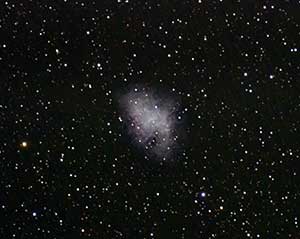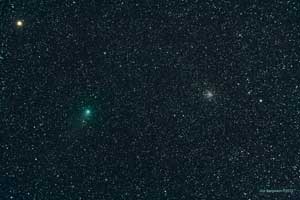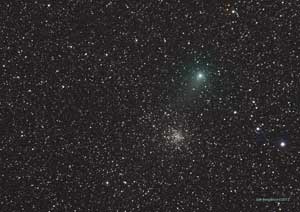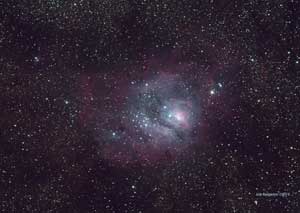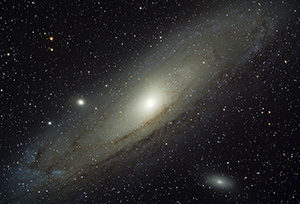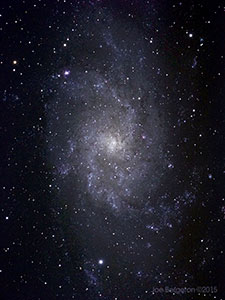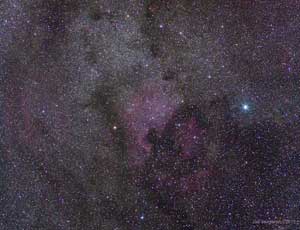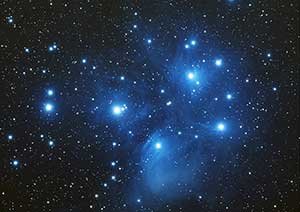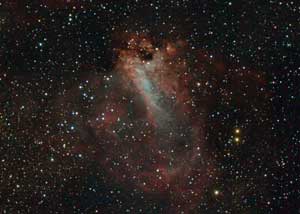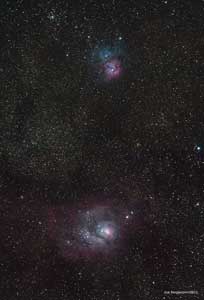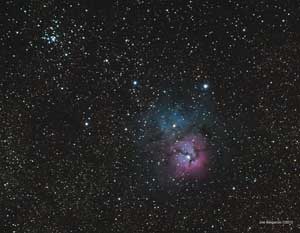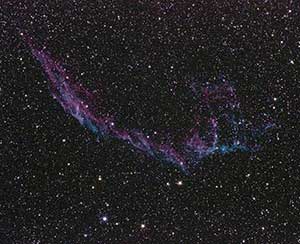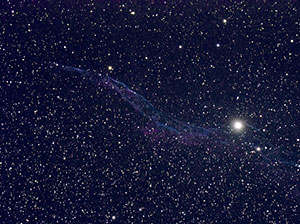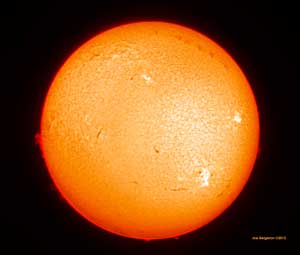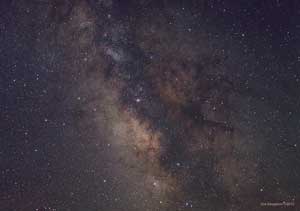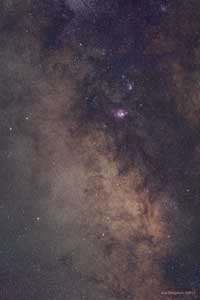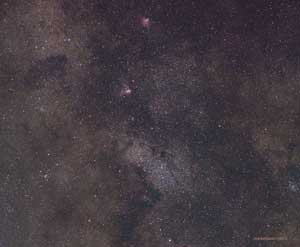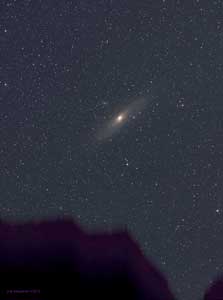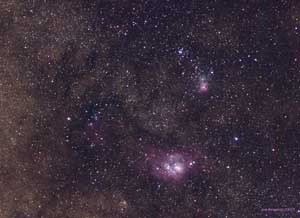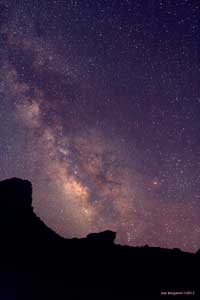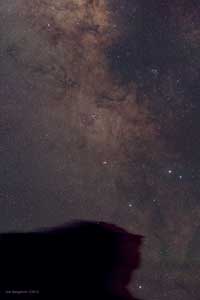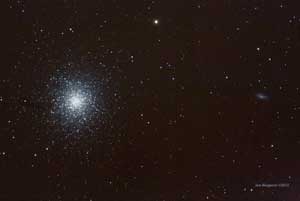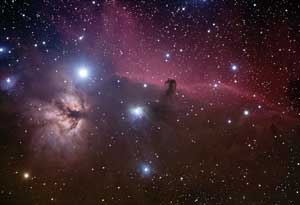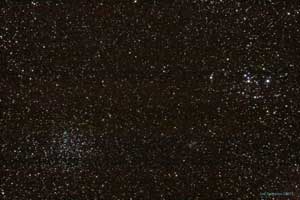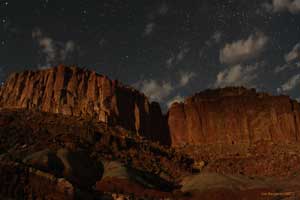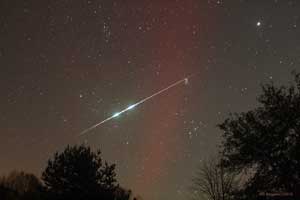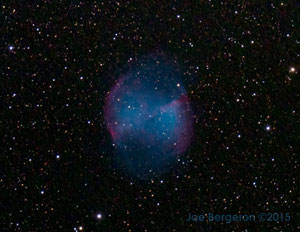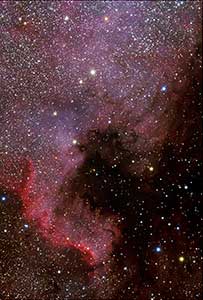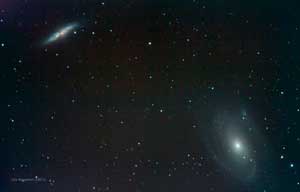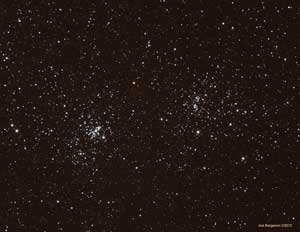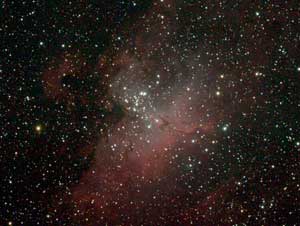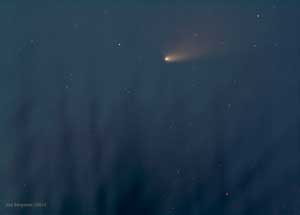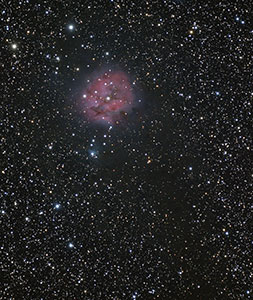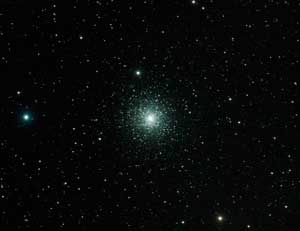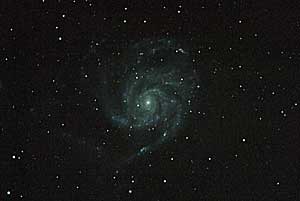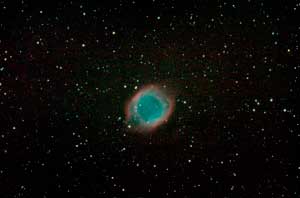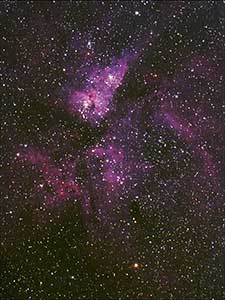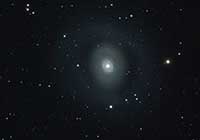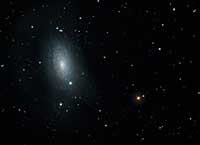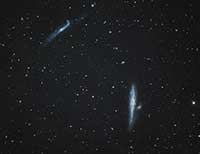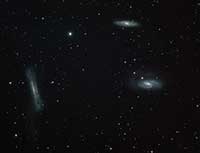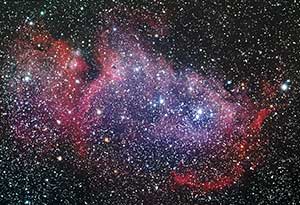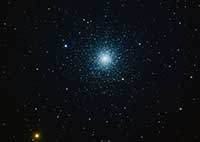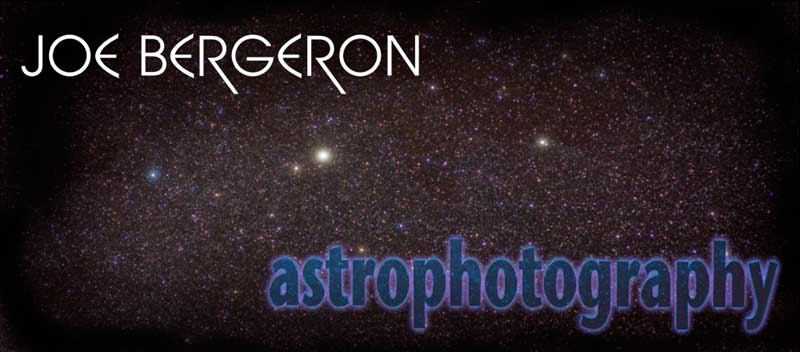
All images copyright by Joe Bergeron. They may not be used for any reason without permission.
| My astro-imaging equipment is slowly
improving. My best mount is a much-upgraded Losmandy
G-11. I also have a Celestron Advanced VX mount which is
usable for smaller telescopes. I have acquired a ZWO ASI120 Mini guide
camera and an Orion Mini Guider scope. Guiding has greatly enhanced my capabilities, though
also increasing the complexity of the system by
necessitating the use of a computer in the field. My most convenient telescope for this sort of thing is my 92mm Astro-Physics f/6.6 refractor. The G-11 handles this small scope well. I also use my 155mm f/9 EDT refractor on the G-11, a combination that works surprisingly well. I also do piggyback work using various Olympus Zuiko lenses and a generic fisheye. My first camera was an unmodified Canon Rebel XS, a basic model which nevertheless was pretty capable. I then moved up to an Olympus E-PL5 mirrorless camera, which proved to be both more sensitive and less noisy than the old Canon. Now I mostly use a ZWO ASI294MC Pro color CMOS camera, which has been another big upgrade in capability. I have only begun to upload images taken with that camera to this site. Some of these images were shot at Cherry Springs State Park in Pennsylvania, the Winter Star Party in the Florida Keys, or Capitol Reef National Park in Utah. Others were made from an orange-yellow semi-rural site. Most recently I've been using a Bortle 3 site in the Mojave Desert. Most of these photos are stacks of 6-36 exposures ranging in length from 2 to 10 minutes each. I control the process using a Mac laptop. PHD2 controls the autoguider. Nebulosity controls the ZWO camera. Today I consider myself a journeyman imager, always trying to improve my results. If I had been able to produce such images 30 years ago, I would have been hailed as one of the greatest astrophotographers in the world! |
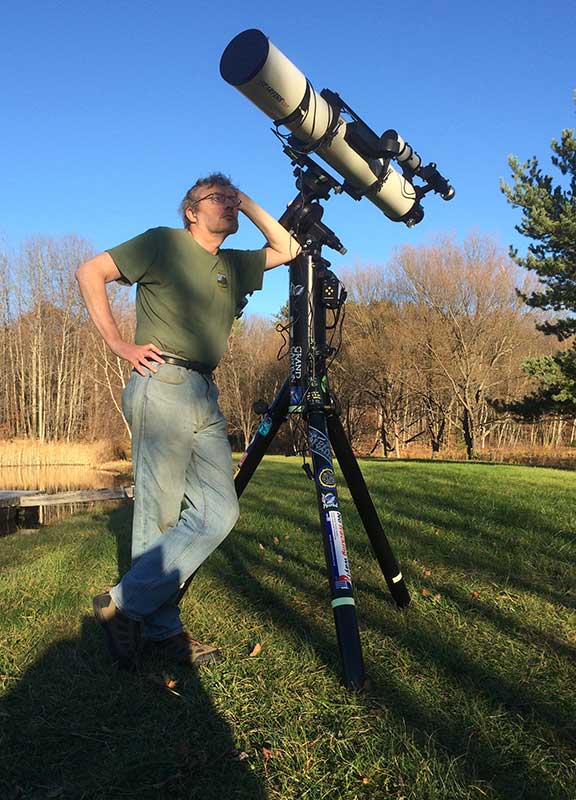 |
||||
 |
 |
 |
 |
 |
 |
 |

